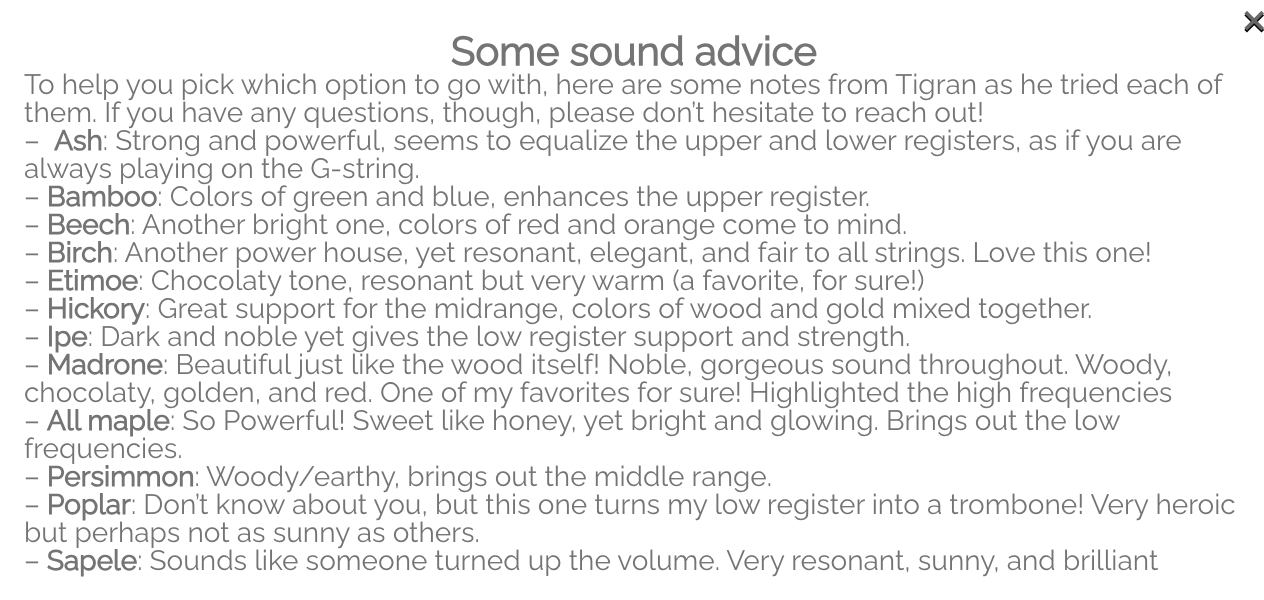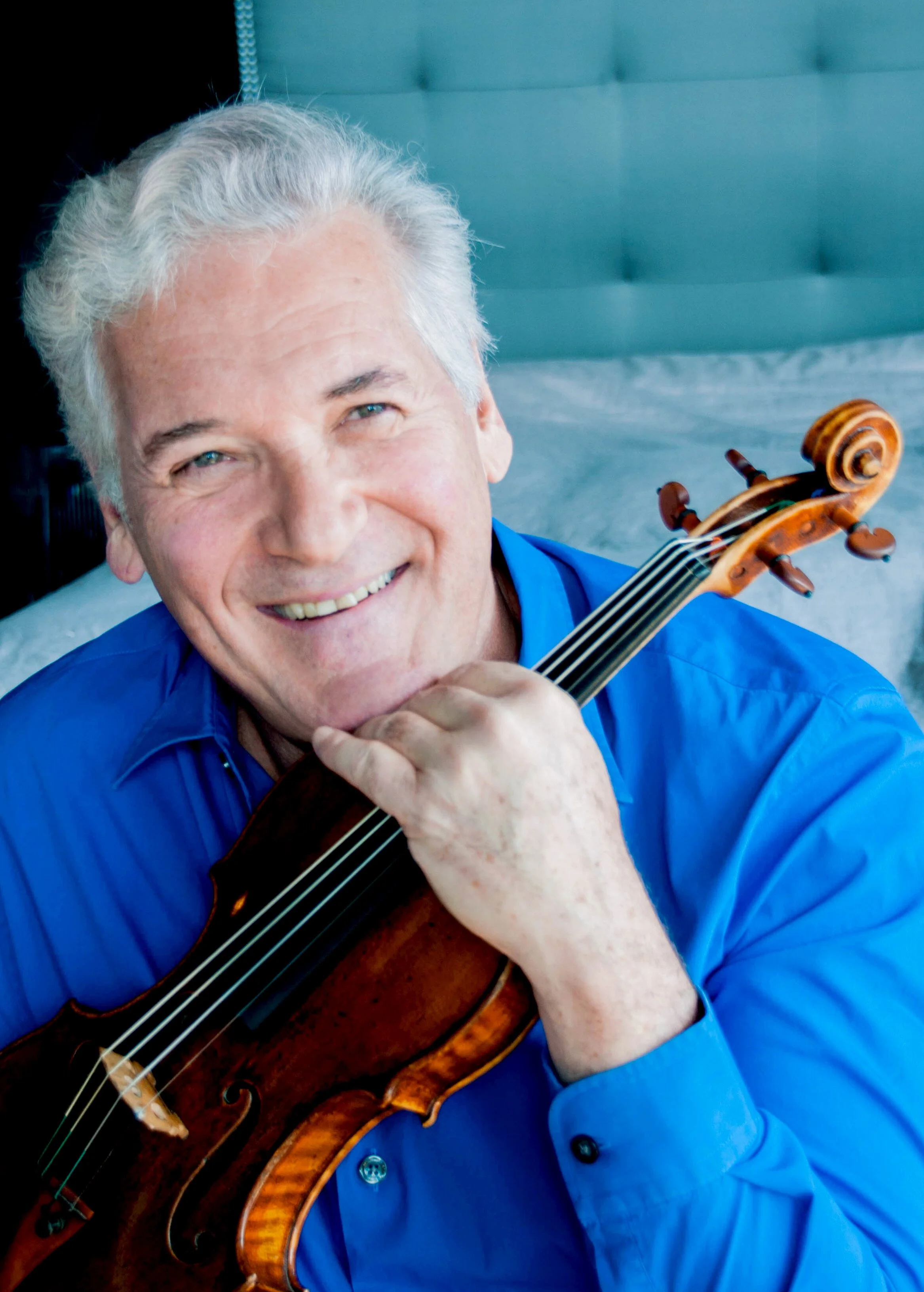REVIEW: The ArcRest - A Shoulder Pad for the Shoulder-restless
Photo courtesy ArcRest website
TL;DR: The ArcRest is a great compromise between a traditional shoulder rest and a foam pad, offering a physical and tonal experience akin to playing without a shoulder rest, while providing just enough stability to support technical playing.
The Rest is History - A Brief History of my Setup
I played on a KUN from ages 12-32 (interrupted by a brief dalliance with the Bonmusica when they were en vogue), but after working with Mimi Zweig and the team at the Indiana University String Teacher's Retreat I was convinced of the sound, postural and technical benefits of going without a shoulder rest.
I began by trading my trusty KUN in for a minimalist foam pad (yes, it's couch foam, and it's green!).
But I wasn't completely satisfied with the pad. I liked the angle it placed my instrument, making it easier to use gravity to make sound, but I missed the stability of my KUN, especially when vibrating or in passagework. I decided to look for something better. Thus began The Quest for the Perfect Setup.
The Quest for the Perfect Setup
As anyone who's been on The Quest can attest, it's a long, winding and disappointing road, filled with false starts and expensive hazards. I tried the Tuttle makeup sponge. I tried going completely shoulder-restless for a while, eschewing the pad for a leather swatch to keep the instrument from slipping off my collarbone. I didn’t neglect chinrests, either, I’ve got a buffet of those now, too.
Too little pad and my shoulder got tired or I missed the support in challenging technical music. Too much, and I felt disconnected from the instrument or that my head and neck were in unnatural positions.
There's a honeymoon period with any new setup. At the start, everything is great! The instrument feels so much more comfortable! Your sound has never been better! Playing is so much easier! You can't believe you ever thought your last setup was so great!
But after a few days you notice an ache in a weird part of your shoulder, or shifting suddenly feels awkward in places it didn't before. These annoyances build in intensity until, a few weeks later, you decide it's time to split with the new setup you thought so highly of, coming back to your previous setup with a hangdog look, seeking reconciliation.
Sometimes I think I change setups just to delay some other important task at hand. This has happened often enough that I came up with a word for the condition, "setupastination".
For Webster's consideration:
Setupastination: A form of productive procrastination involving tinkering with your chinrest & shoulder pad combination to increase its comfort by 1%. Usually results in returning to your original setup a few weeks later.
Most recently, the Polypad and I have had an on-again off-again relationship. I appreciate its shoulder-conforming shape and that it comes in a variety of densities, allowing me to move back and forth between pads depending on what I'm playing and what I'm wearing—suit jackets, for example, add extra padding, which affects how the instrument balances on the collarbone. But there were always problems in our relationship, so, yet again, I was on the lookout for something better.
Last month my former teacher, newly appointed Boston Symphony Orchestra Concertmaster Nathan Cole, came and gave a masterclass for my String Gym students. At one point in the class, he showed us the shoulder pad he'd been using for a while, the ArcRest. I gasped out loud (don't worry, I was muted): Nathan has been an apostle for going shoulder-restless for as long as I've known him, so to see him using one came as a shock.
After the class, I went on ArcRest's website to learn more about it. The rest was developed by Tigran Vardanyan, a violinist in the Rochester Philharmonic Orchestra, and Aaron Bailey, who has a background in engineering and is also a serious amateur violinist.
It consists of a small curved base plate (made of wood, fiberglass or carbon fiber) with four small pads that contact the back of the instrument. The base plate has a strip of velcro on the back which you use to affix a small rectangular hard foam pad. The pads come in four different thicknesses to adjust the height of the rest.
You can buy the plate with just one pad, but given my fickleness I knew I would want to try all of them, so I bought the viola set. Included in the package is a heavy duty silicone band to hold the rest snugly against the back of the instrument. It also includes clear instructions for how to attach it to the back of the instrument and adjust it to your liking.
One thing I missed when I ordered: the base plates come in a variety of wood types. Anything affixed to the instrument changes how it resonates: if you need proof, try taking off your chinrest sometime!
So each wood type, in addition to looking different, offers a slightly different sound. Tigran provides his observations on the different sounds of each wood here:
Baseplate description from ArcRest website
I'm still in the honeymoon stage with my ArcRest, so you can take my enthusiasm with a grain of salt, but so far I'm loving it! The rest places my viola in a place where I can easily "hook" my jaw into the lip of the chinrest, allowing me to balance the instrument easily between my head and collarbone and giving my left hand the freedom to move easily up and down the fingerboard without having to work hard to support the instrument.
I also like that there are different size pads, allowing for flexibility on those days when things just feel different, or if I'm performing and wearing a suit jacket. The price point of $50 aligns with what I'd expect to pay for a shoulder rest.
So if you're still on The Quest for the Perfect Setup, and are looking for something flexible that is a compromise to playing without a shoulder rest, I highly recommend taking a look at the ArcRest.
For more, here's a little video review I made of the ArcRest:










